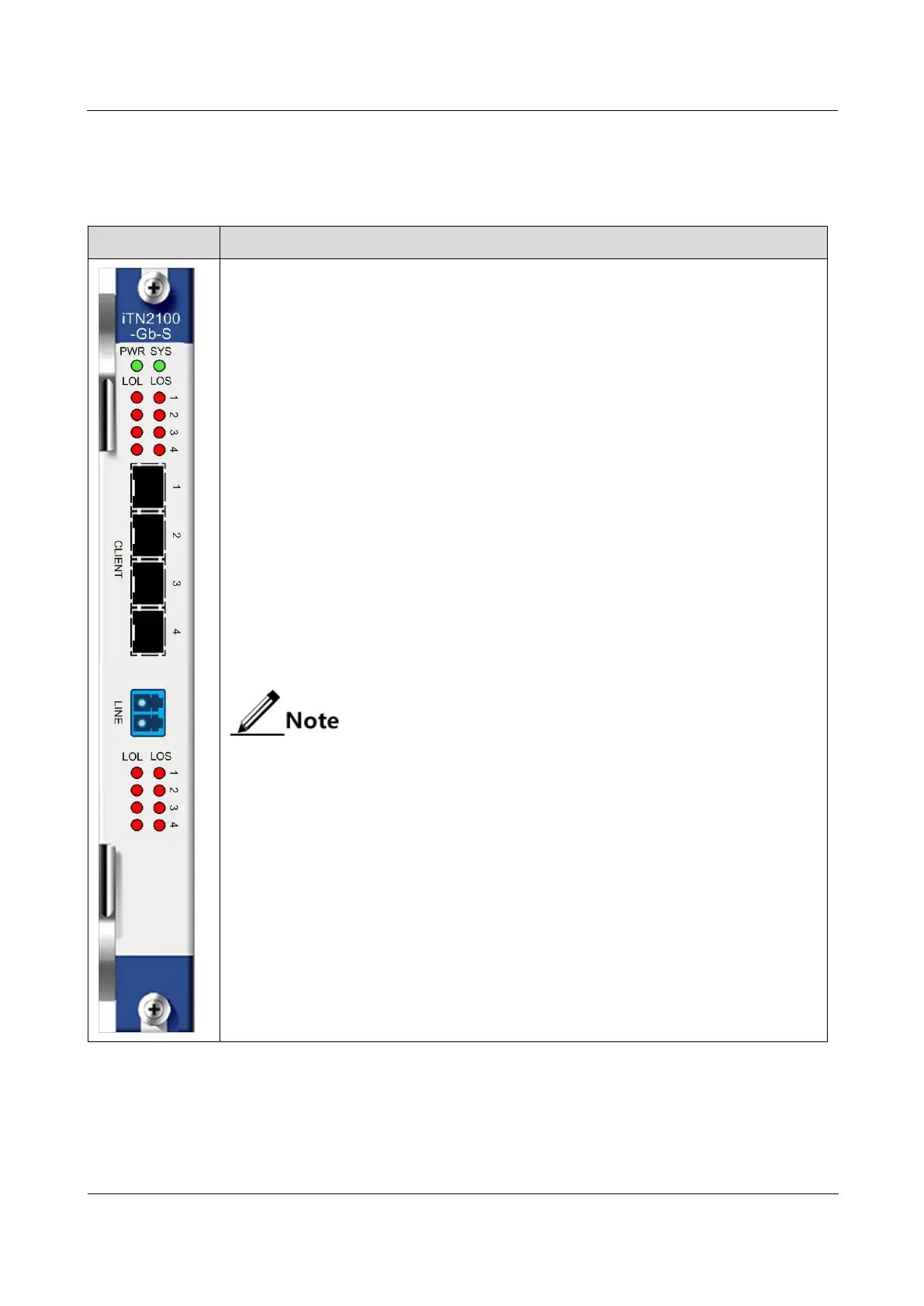The iTN2100-Gb can realize single-fiber bidirectional transmission of 4-way optical
signals through wavelength conversion and multiplexing/ de-multiplexing.
Realize single-fiber bidirectional transparent transmission of 4-way optical signals
through the Coarse Wavelength Division Multiplexing (CWDM) technology.
Support point-to-point transmission, being used in a pair.
Realize wavelength conversion and multiplexing/de-multiplexing of 4-way optical
signals on a card.
Provide the SFP interface at the client side, supporting SFP modules with various
transmission distances.
Support hot swapping of SFP modules and DDM of SFP optical modules.
Realize Re-amplifying and Re-shaping (2R) on 10 Mbit/s–1.25 Gbit/s optical signals
and realize Re-amplifying, Re-shaping, and Re-timing (3R) on optical signals with
standard speed (1000BASE-X, 100BASE-FX, STM-4, and STM-1) by the iTN2100-Gb
(A).
Realize Re-amplifying and Re-shaping (2R) on 10 Mbit/s–2.66 Gbit/s optical signals
and realize Re-amplifying, Re-shaping, and Re-timing (3R) on optical signals with
standard speed (1000BASE-X, 100BASE-FX, STM-16, STM-4, and STM-1) by the
iTN2100-Gb (B).
Support ALS by line-side optical interfaces.
Support failover, realizing failover from line side to client side and from client side to
client side (the peer device).
Support hot swapping.
Except for card name printed on the panel, all models of the iTN2100-Gb (A)
and the ones of the iTN2100-Gb (B) are identical. This guide takes the
iTN2100-Gb-s for an example.
Models of the iTN2100-Gb (A): iTN2100-Gb-S, iTN2100-Gb-S-R, iTN2100-Gb-
L, and iTN2100-Gb-L-R
Models of the iTN2100-Gb (B): iTN2100-48-S and iTN2100-48-S-R

